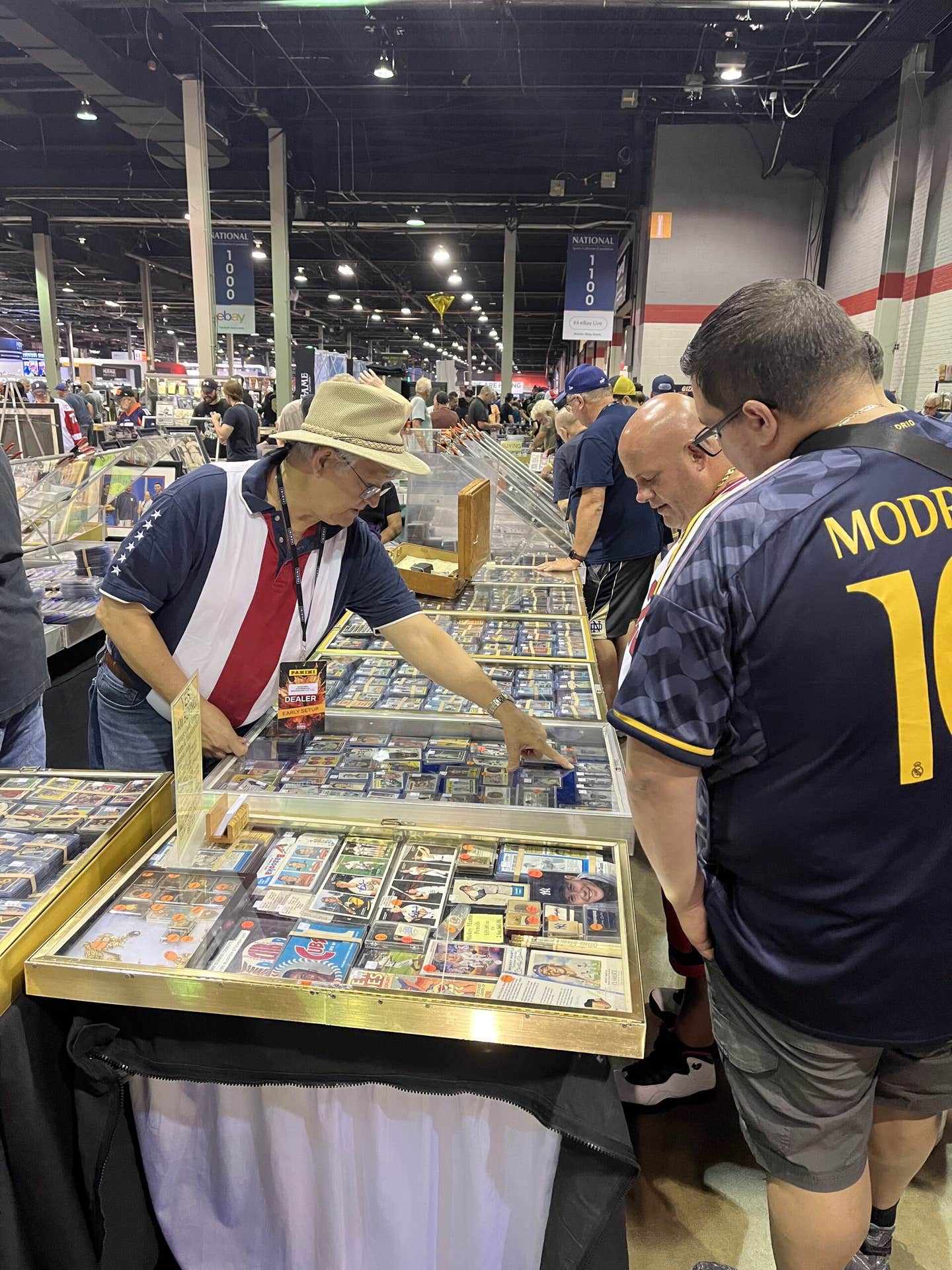News
Topps Cards Help Tell the story
By Dan Schlossberg
At age 67, I still love baseball cards. I collected as a kid, flipping and trading with friends, and years later promoted the hobby as co-owner of Skybox Baseball Cards in Livingston, N.J. I attended my share of card shows, too.
Now that I’m an author, I love to reprint cards in books. Even though the original full-color versions don’t look quite as good in black-and-white, they still dress up a book – and remind readers of an age where baseball cards were quite the rage.
Reprinting cards requires permission of the original producer, however, so I contacted Topps publicity chief Clay Luraschi prior to publishing my latest book, When the Braves Ruled the Diamond: Fourteen Flags Over Atlanta.
Luraschi, a long-time colleague who has appeared on my weekly Braves Banter radio show, passed my inquiry along to Topps deputy general counsel Heather Greenberg. Greenberg granted permission for me to reprint 10 Topps cards, including those from such handsome subsets as Cracker Jack Ball Players, Allen & Ginter, Topps Heritage and Topps Stadium Club.
All I needed to do was to pick the cards and let her know which ones I chose. I also had to sign a legal agreement and give Topps credit on each reprint.
It wasn’t easy to narrow my choices down. For one thing, my book covers the entire 14-year title run from 1991-2005, years when the Atlanta roster was packed with potential Hall of Famers on and off the field.
This is actually the 25th anniversary of the 1991 Braves team that not only started the unprecedented streak but remains the one and only club in the history of the game to post the worst record in the majors one year but reach the World Series the next.
The list of contributors is endless. Start with Tom Glavine, Greg Maddux, John Smoltz and manager Bobby Cox, all now part of the Cooperstown gallery. Then there is Chipper Jones, a future Hall of Famer; Terry Pendleton, like Jones a former batting champion and Most Valuable Player; Andruw Jones, who won 10 straight Gold Gloves and hit a club-record 51 home runs in a season; Gary Sheffield, who broke Hank Aaron’s single-season team mark with 132 runs batted in; Javy Lopez, who hit the most homers as a catcher in a single season; and Fred McGriff, the best trade acquisition in Braves history.
I not only needed to pick 10 cards but also needed to spread them throughout the book, illustrating the tales of the men who made The Streak possible.
Because I had a half-dozen handsome Ronnie Joyner illustrations, more than a dozen beautiful Bill Menzel photographs, I was able to pick cards of the players I needed most.
While I had ample Maddux art, for example, I needed more McGriff and players like Rafael Furcal.
With all these calculations considered, these are the cards that made the cut:
• John Smoltz (Topps Heritage 2008, 1959 format, #440)
• John Smoltz (Topps Stadium Club 2014, Smoltz gets drenched, #23)
• Tom Glavine (Topps 2004, #57)
• Fred McGriff (Allen & Ginter 2014, #65)
• Javy Lopez (Topps Heritage 2001, #34)
• Andruw Jones (Topps Heritage 2002, #405)
• L.W. (Chipper) Jones (Cracker Jack Ball Players 2004, #84)
• Jones Atlanta NL (Topps Trading Card History 2008 T-207)
• Rafael Furcal (Topps Heritage horizontal, #304)
• Topps Trios (Justice/McGriff/Gant Topps 1994, #111).
Why Smoltz twice? He was the only Braves player whose career spanned the entire 14-year streak, though Cox and Mazzone also wore Atlanta uniforms throughout that time.
The 292-page hardcover, which features a foreword by Bobby Cox and a detailed index, is divided into two parts.
The first deals with the most significant personalities, including general manager John Schuerholz, pitching coach Leo Mazzone, plus the Hall of Fame quartet: Cox, Glavine, Maddux and Smoltz. The two MVPs, Pendleton and Chipper Jones, share a long chapter that completes that section.
What follows is a year-by-year documentation of how the streak evolved. Each chapter features a year, divided into regular season and postseason segments. Opening Day lineups lead off each chapter, along with the author’s choice for best hitter, best pitcher and best newcomer for that year.
Readers will learn how Cox won with fast teams, slow teams, slugging teams, old teams and even teams so young that 18 rookies once popped up on his 25-man roster. They will also learn why Andruw Jones, McGriff, Sheffield and Schuerholz could follow Chipper’s lead as the next wave of Braves to crack the coveted Cooperstown chamber.
There are plenty of oddities, presented in sidebar form. For example, Kent Mercker, never a Hall of Fame contender, was part of two no-hitters during the streak. But the Big Three of Maddux, Glavine and Smoltz never pitched one. Readers will also discover the two Braves who married movie stars, and which Braves pitcher coaxed the conservative general manager to dance to rap music in the aisles of the team plane. It would be have been nice to have that picture!
When the Braves Ruled the Diamond is now available here.
Long-time SCD columnist Dan Schlossberg will be signing his book at Bookends in Ridgewood, N.J., on April 23; the Yogi Berra Museum in Montclair, N.J., on May 22; and the Braves Museum in Turner Field in Atlanta on June 11. Contact Dan at ballauthor@gmail.com.








